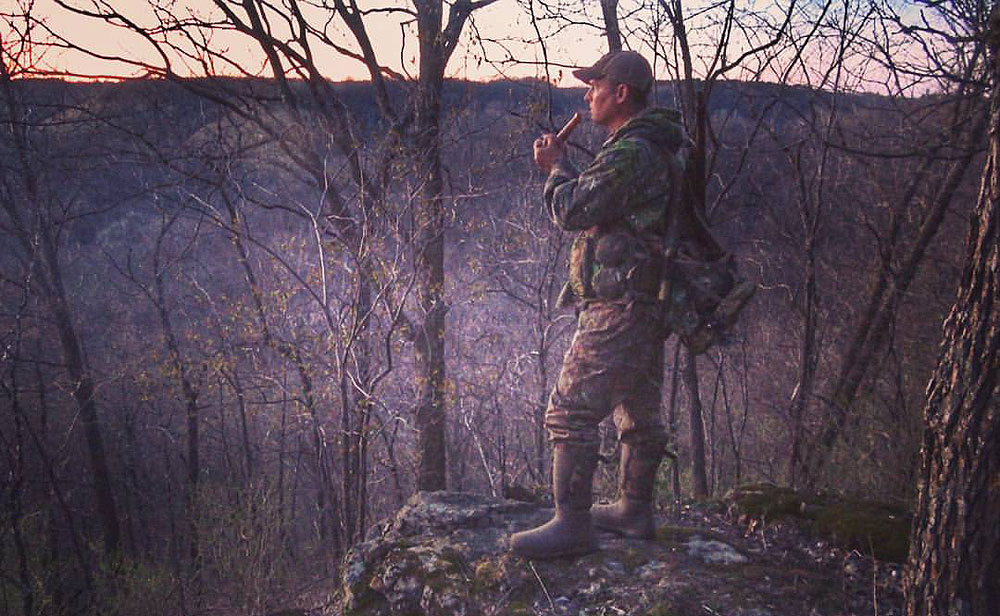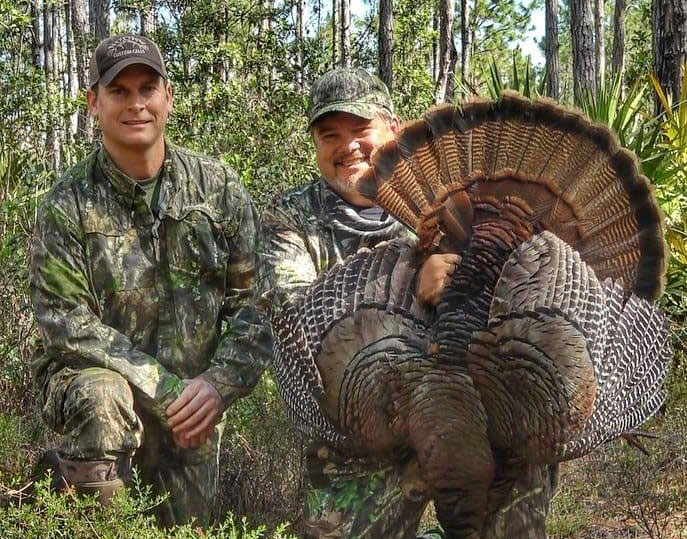Shane Simpson | Mossy Oak ProStaff

Because I've done so well in turkey calling contests with my owl hooting, I'm often asked, “How much owl hooting do you do when you're in the woods hunting turkeys?”
Owl hooting is my locator call. I use an owl hooter in the morning at daybreak. I owl hoot in the middle of the day, and I use an owl hooter when I'm roosting birds in the evening. Occasionally, I’ll use a goose call. Every now and then I’ll use a crow call to locate turkeys. When I'm locating turkeys, I would say that 80 percent of the time I'm using a barred owl call.
Not many turkey hunters use a goose call, and I don’t use it very often. However, when I'm hunting turkeys in an area that I know homes numbers of geese, I will blow the goose call. I’ll try a pileated woodpecker call. If that doesn’t work, then I’ll go to my goose call. I've had experiences when nothing would make a turkey gobble except a goose call. The goose call is loud, and it carries and covers a lot of ground. It’s much like a train horn – it’s an abrupt, loud sound. Sometimes one loud honk will make a turkey gobble.
Once I locate a turkey, depending on the terrain, I like to get to within 150 yards of the bird. But if I find a nice little clearing at 200 yards that I think the gobbler will come to, and I have a good place to set up, I may stay back at the clearing and try to call the turkey to it. I know that many turkey hunters like to get within 100 yards or closer. But when you try to get that close, you may pass through a little opening that you haven’t seen that allows the turkey to see you. If that turkey catches you moving, the game is usually over. So, I like to play it safe. If I don’t spook that turkey, I still can hunt him even if that gobbler is standing out there gobbling, and he won’t come any closer. If I can move without being seen, I may move 90 degrees off to the side from where I’ve originally called. I’ll start calling from that new position, making the gobbler think that since he didn’t show up, the hen may be walking away from him.
If the turkey’s henned-up, he’ll be hard to take. But you can still take that turkey if you’re willing to move closer or start calling the hen.



























